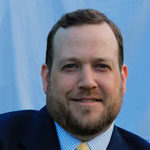
BATON ROUGE — By now, most folks in south Louisiana have seen the maps. They’re generated by government agencies, private groups and newspapers, and usually include clusters of dots or circles depicting where hurricane evacuees are now located. Places like Atlanta and Washington appear like crows nests and there are even tiny indicators in exotic locales such as Puerto Rico, Hawaii and Alaska.
The dispersion of people can also clearly be seen in headlines: Home prices in Baton Rouge are up 27 percent for the second quarter. Evacuees in Houston are being credited with a 17.5 percent spike in the murder rate. Bayou jam sessions are being held in Brooklyn.
Additionally, Louisiana’s Road Home program, which should soon be distributing money to help people get back into their homes, saw initial registration swell to more than 100,000 applicants. That’s good news locally, as at least one demographer believes, the Bayou Parish region and St. Charles Parish will noticeably grow once this money becomes available.
The shifting of lives from along the Gulf Coast as a result of the storms last year is still staggering to comprehend, comparable maybe to the 1930s Dust Bowl and possibly the 1927 floods. Certainly, more than anything else from Cajun lore, it beckons back to the Acadian exile.
Still, it stands alone when stacked against them all. According to state figures, Katrina and Rita displaced more than 780,000 people in Louisiana alone.
The end result could potentially be a loss of federal funding and two congressional seats over the next 14 years. There are also indications that the shift of political influence from New Orleans to other regions around the state is strengthening.
It’s a sullen cause-and-effect scenario where population equals money and pull; a state of affairs that demographers and political observers alike believe is still coming. But until a solid census survey is taken – the next one is scheduled for 2010 — nothing can be proven.
What’s the count?
“No one is geared up to take a real census except the U.S. Census Bureau and they only do it every 10 years,” said State Demographer Karen Paterson. “And it’s a moving target right now because people don’t stay in one place. A lot of things are still unresolved.”
The census recently released its American Community Survey for cities with populations greater than 65,000 and less than 250,000, but it has a large margin of error and only counts people living in households.
Another population survey for the devastated areas, this time based on the state’s administrative records, is also expected in December.
While it will make for an interesting read, Paterson said the real scoop will be dished by the official 2010 decennial census.
The geographic winners
Elliott Stonecipher, a political analyst and demographer based in Shreveport, agreed that it will largely be a waiting game, but added there is anecdotal information that forecasts certain trends.
The biggest gainer from the diaspora remains the Baton Rouge region. Outlying parishes like Livingston and Ascension were already growing due to so-called “white flight” and the city’s school enrollments overshadowed estimates recently. Exactly how many people are in Baton Rouge now is anybody’s guess; the range has been from 50,000 to 100,000.
Lafayette is stuck in the middle of the trend, Stonecipher said. It definitely took on additional residents after Katrina and Rita, but there are ongoing debates among developers that expansion efforts might be outpacing the perceived population boom.
Further north, there are signs of relatively minor growth in Shreveport, even though a recent survey showed a drop in residents. Stonecipher believes that dip might hold if baby boomers and retirees don’t start looking towards the state line to spend Road Home money.
“There are a lot of people saying Shreveport is now the second largest city in the state and that’s not going to end up being true,” he said. “It is a little further than most evacuees will want to live and there is a huge cultural barrier with anything north of Alexandria.”
The sleeper success in this shakeout may be parishes located in the Bayou Parish Region, St. Charles, Terrebonne and Lafourche.
As the state dispenses money to people for rebuilding, and the way of life in places like St. Bernard and Plaquemines parishes doesn’t improve, white-collar families might look further down the coast for a similar lifestyle.
“It just seems to make so much sense to me,” Stonecipher says. “It depends how serious we are about coastal restoration issues and hurricane issues. Absent those fears, though, these areas could disproportionately gain.”
Moving upriver
While good data is hard to come by, there is a trend demographers are well aware of: Louisiana was hemorrhaging residents prior to last year’s hurricane season. Based on the most recent census, 75,000 more people moved out of Louisiana than from 1995 to 2000. New Orleans alone lost more than 47,000 people during the same period.
Stonecipher said the storms have placed this historical trend into hyper-drive. Additionally, recent media reports have used postal records to show that the wave of people moving back into New Orleans has slowed, and Stonecipher believes a counter-wave of people moving out is about to occur.
“We don’t want to believe that any of the people that stayed are going to leave, but they are,” he said. “They’re going to leave because the schools didn’t work out. They’re going to leave because of Entergy. They’re going to leave because of the mayor’s race and state politics. They are fed up and they do not want to wait anymore.”
Stonecipher said the 2010 census will pick up this loss and it could have a negative impact on how much federal funding the state gets and how new election boundaries are drawn.
Even before the storms, Louisiana needed another 7,000 new residents over the next five years to keep from losing a congressional seat. But that was never a likelihood; a 30-year estimate by the census bureau ranked Louisiana 49th overall in anticipated growth.
But now, in the wake of Rita and Katrina, the situation is so dire that Stonecipher said another congressional seat could be lost following the 2020 population census unless something “unforeseen” happens.
The traditional epicenter of power in state politics is expected to shift as well. As more people leave the New Orleans region, Stonecipher said its fabled hold over the state Legislature will deteriorate further.
Of course, anything can happen between now and 2010. The New Orleans region will continue its rebirth as federal dollars fill state coffers and homes will be rebuilt in increasing numbers.
But below the surface, Stonecipher said a significant segment of the population is going to grow weary with the slow pace of recovery and the incessant noise of political chatter.
“Some people might be fooled because of all the money being spent and because they can see the brick and mortar,” he said. “But dollars being spent does not mean healthy and fundamental change. We can’t allow ourselves to believe every single person is coming home and that they’ll stay here when they do.”
Jeremy Alford can be reached at jeremy@jeremyalford.com.





Be the first to comment